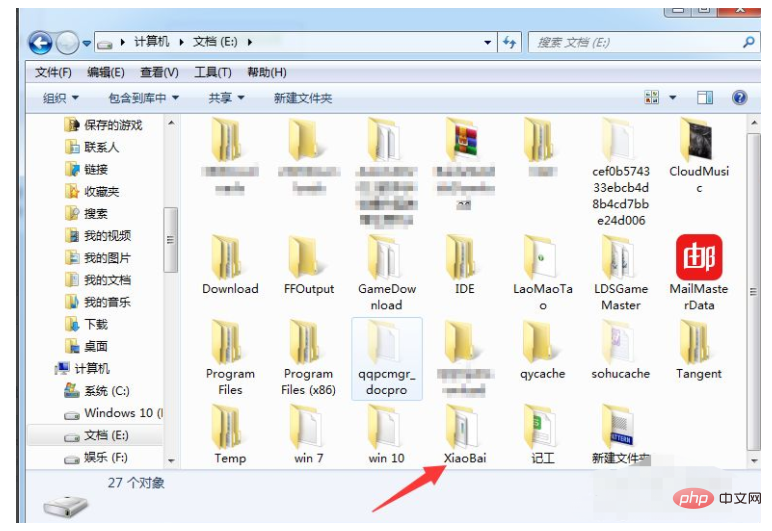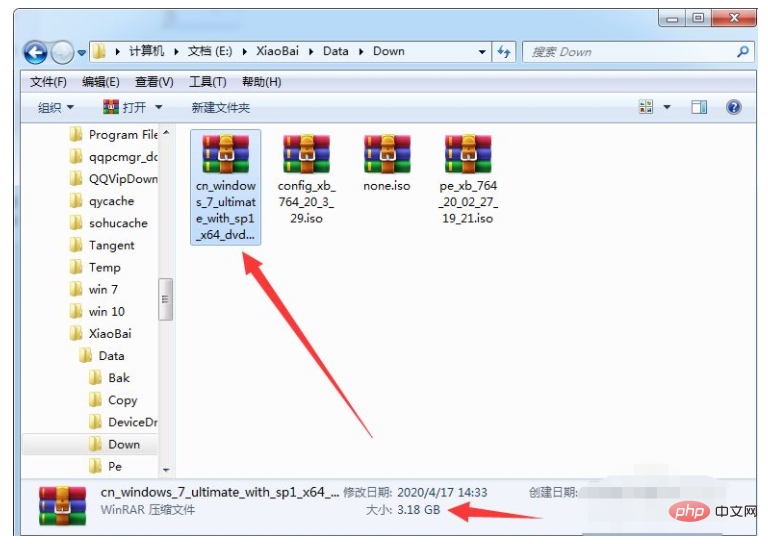I want to know where the system downloaded for system reinstallation is located
Because many people are now using Xiaobai's one-click system reinstallation, but many people are not able to understand where the system downloaded for Xiaobai's system reinstallation is. The following is the specific location provided by the editor for your reference.
Tools/materials:
System version: win10
Brand model: Lenovo yoga13
Software version: Xiaobai’s one-click system reinstallation V2209
Where is the system downloaded by Xiaobai system reinstallation? It can usually be viewed in the folder on the computer disk.
Method/steps:
Method: Enter the computer disk to view the xiaobai folder
1. Reinstall the downloaded system for Xiaobai system Where, open the computer on the desktop and enter the E drive.

2. Find the XiaoBai folder and double-click to open it.

3. Click to enter the Data folder.

4. Click to enter the Down folder.

5. Find the file with the largest compressed file size. This is the operating system. Double-click to open the compressed file.

6. The setup.exe file is the downloaded operating system.

Summary: The above is the system location for Xiaobai’s system reinstallation download.
The above is the detailed content of I want to know where the system downloaded for system reinstallation is located. For more information, please follow other related articles on the PHP Chinese website!

Hot AI Tools

Undresser.AI Undress
AI-powered app for creating realistic nude photos

AI Clothes Remover
Online AI tool for removing clothes from photos.

Undress AI Tool
Undress images for free

Clothoff.io
AI clothes remover

Video Face Swap
Swap faces in any video effortlessly with our completely free AI face swap tool!

Hot Article

Hot Tools

Notepad++7.3.1
Easy-to-use and free code editor

SublimeText3 Chinese version
Chinese version, very easy to use

Zend Studio 13.0.1
Powerful PHP integrated development environment

Dreamweaver CS6
Visual web development tools

SublimeText3 Mac version
God-level code editing software (SublimeText3)





